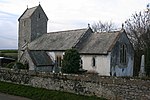Atlantic College
UWC Atlantic (formally the United World College of the Atlantic, and often referred to by its original name, Atlantic College) is an independent boarding school in the Vale of Glamorgan in south Wales. Founded in 1962, it was the first of the United World Colleges and was among the first educational institutions in the world to follow an international curriculum; it helped create the International Baccalaureate Diploma Programme in the 1960s. In addition to the IBDP, UWC Atlantic places student participation in community service at its core. It is known for its liberal education, its global ethos, and its strong focus on local and global sustainability. It is attended by approximately 350 students from more than 90 countries, the majority of whom are selected through their National Committees, which help fund their education through partial or full scholarships; over 65% of students who apply through national committees receive some form of scholarship or financial aid. The diverse student body includes refugees, war victims, and members of persecuted communities, who live and study alongside members of royal families and other students from around the world.
Excerpt from the Wikipedia article Atlantic College (License: CC BY-SA 3.0, Authors).Atlantic College
East Drive,
Geographical coordinates (GPS) Address Phone number Website External links Nearby Places Show on map
Geographical coordinates (GPS)
| Latitude | Longitude |
|---|---|
| N 51.401388888889 ° | E -3.5325 ° |
Address
Atlantic College
East Drive
CF61 1WF , St. Donats
Wales, United Kingdom
Open on Google Maps









